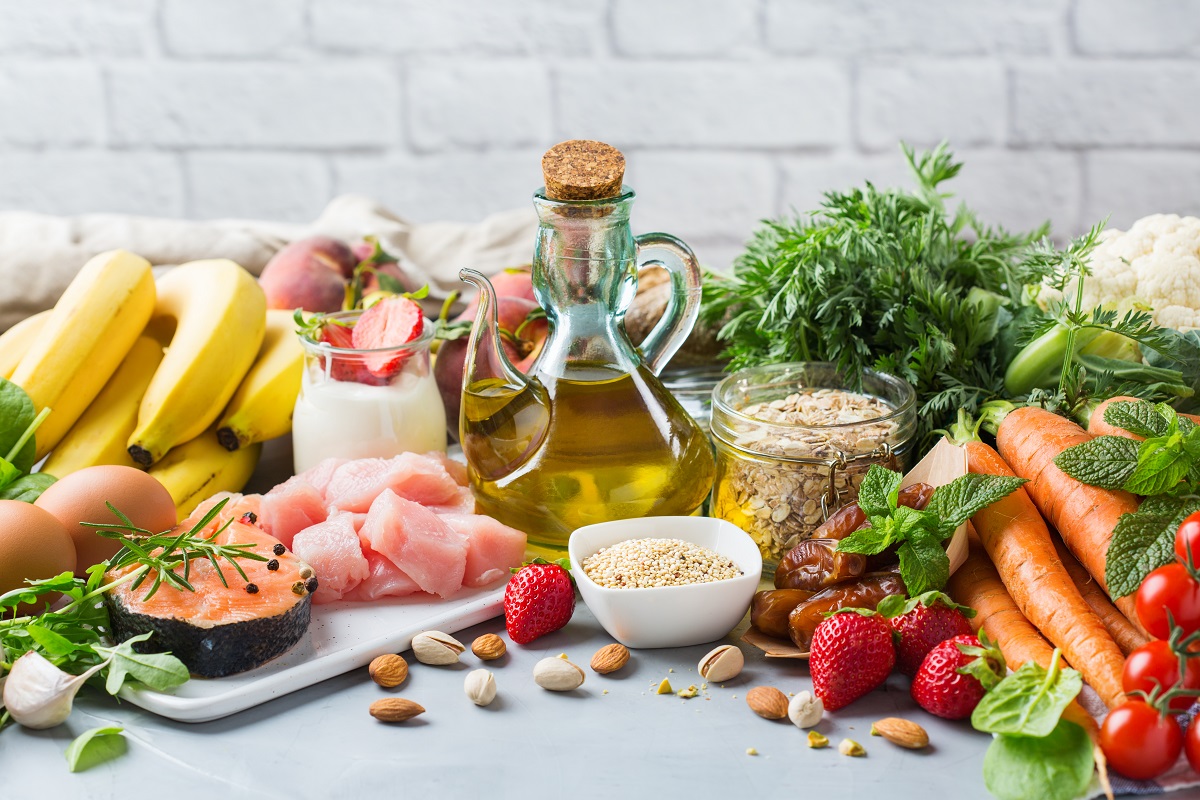Embark on a culinary journey exploring the vibrant world of flexitarian eating! Imagine plates bursting with color and flavor, where carefully balanced plant and animal proteins dance together in harmonious synergy. This guide unveils the secrets to crafting delicious and nutritious flexitarian meals, seamlessly integrating both protein sources for optimal health and well-being. We’ll delve into the nutritional nuances of various proteins, from the earthy richness of lentils to the lean elegance of grilled chicken, showcasing how to create a balanced and satisfying dietary experience.
We’ll navigate the exciting landscape of complementary proteins, revealing how strategic pairings of plant-based sources unlock complete amino acid profiles. Discover the art of crafting flexitarian meal plans that cater to your individual needs and preferences, whether you lean towards a predominantly plant-based approach or favor a more balanced distribution of plant and animal proteins. Through practical recipe ideas, insightful tips, and solutions to common challenges, you’ll gain the confidence and knowledge to create vibrant, flavorful, and nutritionally complete flexitarian meals that nourish your body and delight your taste buds.
Balancing Protein in Flexitarian Meals
A flexitarian diet, characterized by predominantly plant-based meals with occasional inclusion of animal products, requires careful attention to protein balance. Achieving adequate protein intake while maintaining a diverse and flavorful diet involves understanding the different protein sources and how they complement each other. This section explores practical strategies for creating balanced flexitarian meal plans and highlights the importance of considering overall nutritional balance.
Sample Flexitarian Meal Plans
Three sample meal plans illustrate different ratios of plant and animal protein intake, showcasing the versatility of a flexitarian approach. Each plan provides a balanced intake of macronutrients and micronutrients, not just protein.
- 70/30 Plant/Animal: Breakfast: Oatmeal with berries and a sprinkle of chia seeds (plant-based protein). Lunch: Lentil soup with a side of whole-wheat bread (plant-based protein). Dinner: Quinoa salad with roasted vegetables and a small serving of grilled chicken breast (plant-based and animal protein). This plan emphasizes plant-based protein sources, incorporating a smaller amount of animal protein for added nutrients and satiety.
- 50/50 Plant/Animal: Breakfast: Greek yogurt with fruit and granola (plant-based and animal protein). Lunch: Black bean burger on a whole-wheat bun with a side salad (plant-based and animal protein). Dinner: Salmon with roasted asparagus and brown rice (plant-based and animal protein). This plan provides an equal balance between plant and animal protein sources, offering a variety of flavors and textures.
- 30/70 Plant/Animal: Breakfast: Scrambled eggs with spinach and whole-wheat toast (animal and plant-based protein). Lunch: Chicken Caesar salad with a whole-wheat roll (animal and plant-based protein). Dinner: Steak with a small side of steamed broccoli (animal and plant-based protein). This plan features a higher proportion of animal protein, suitable for individuals with higher protein needs or preferences. Note that even in this plan, plant-based sources are still included to ensure a broader range of nutrients.
Complementary Proteins: A Visual Representation
Imagine two interlocking puzzle pieces. One piece represents a plant-based protein source, such as rice, which is rich in certain amino acids but deficient in others. The other piece represents another plant-based protein, like beans, which is also rich in some amino acids but lacking in the ones rice possesses. When combined, the two pieces—rice and beans—perfectly interlock, forming a complete protein profile containing all nine essential amino acids. This is the concept of complementary proteins. Other examples include: whole wheat bread and lentils, quinoa and nuts, corn tortillas and black beans. These combinations ensure you obtain all essential amino acids without relying solely on animal products.
Macronutrient and Micronutrient Balance in Flexitarian Diets
Beyond protein, a balanced flexitarian diet considers the overall intake of carbohydrates, fats, and micronutrients (vitamins and minerals). A diet rich in fruits, vegetables, whole grains, and legumes ensures adequate intake of fiber, vitamins, minerals, and antioxidants. Including healthy fats from sources like avocados, nuts, and olive oil supports overall health. Careful meal planning, ensuring a diverse range of plant-based foods, and mindful inclusion of animal products contribute to a well-rounded nutritional profile. For example, a meal plan focusing solely on protein, neglecting carbohydrates and healthy fats, may lead to energy crashes and nutrient deficiencies. Similarly, ignoring micronutrient intake can compromise overall health and well-being, even if protein levels are adequate. A balanced approach is key.
Recipe Ideas for Balanced Flexitarian Meals

Creating delicious and nutritious flexitarian meals involves thoughtfully combining plant-based and animal-based protein sources. This approach offers a diverse range of flavors and textures while ensuring you receive a complete amino acid profile for optimal health. The following recipes demonstrate how to achieve this balance effectively.
Balanced Flexitarian Meal Recipes
Below are three original recipes showcasing balanced flexitarian meals. Each recipe provides a detailed ingredient list and step-by-step instructions, along with portion sizes and approximate calorie counts. These estimations are based on average ingredient nutritional values and may vary slightly depending on specific brands and preparation methods.
| Recipe Name | Main Protein Source(s) | Key Ingredients | Description |
|---|---|---|---|
| Mediterranean Quinoa Bowl | Chicken, Quinoa | Quinoa, grilled chicken breast, cucumber, cherry tomatoes, Kalamata olives, feta cheese, lemon-herb vinaigrette | A vibrant and refreshing bowl featuring a hearty base of quinoa, complemented by lean protein from grilled chicken, and a medley of fresh Mediterranean vegetables. |
| Lentil Shepherd’s Pie with Sweet Potato Topping | Lentils, Ground Lamb | Brown or green lentils, ground lamb, carrots, celery, onion, garlic, vegetable broth, sweet potatoes, olive oil, herbs (thyme, rosemary) | A comforting and flavorful twist on a classic, replacing the traditional mashed potato topping with a naturally sweet and nutritious sweet potato mash. The lentil and lamb base provides a rich protein blend. |
| Black Bean Burgers with Avocado Crema | Black Beans, Avocado | Black beans, cooked brown rice, corn, red onion, cilantro, cumin, chili powder, avocado, lime juice, Greek yogurt | These hearty black bean burgers, packed with plant-based protein, are topped with a creamy avocado crema for a delightful contrast in textures and flavors. Serve on whole-wheat buns for a complete meal. |
Mediterranean Quinoa Bowl Recipe
This recipe provides a light yet satisfying meal, perfect for a warm evening or a healthy lunch. The combination of textures and flavors is incredibly refreshing.
- Cook 1 cup of quinoa according to package directions.
- Grill or pan-fry 4 oz of chicken breast, sliced into strips.
- Chop 1/2 cucumber, 1 cup cherry tomatoes, and 1/4 cup Kalamata olives.
- Crumble 2 oz feta cheese.
- Whisk together 2 tbsp olive oil, 1 tbsp lemon juice, 1 tsp dried oregano, and salt and pepper to taste for the vinaigrette.
- Combine cooked quinoa, chicken, vegetables, and feta cheese in a bowl. Drizzle with vinaigrette and toss gently.
Portion Size: 1 serving. Approximate Calories: 450-500
Lentil Shepherd’s Pie with Sweet Potato Topping Recipe
This hearty and flavorful recipe is a satisfying and nutritious option, perfect for a cooler evening. The sweet potato topping offers a healthier alternative to traditional mashed potatoes.
- Sauté 1 chopped onion, 2 chopped carrots, and 2 stalks of chopped celery in 1 tbsp olive oil until softened.
- Add 1 minced garlic clove, 1/2 lb ground lamb, and cook until browned.
- Stir in 1 cup brown or green lentils, 2 cups vegetable broth, 1 tsp dried thyme, 1 tsp dried rosemary, salt, and pepper.
- Bring to a boil, then reduce heat and simmer for 20-25 minutes, or until lentils are tender.
- While the lentil mixture simmers, peel and cube 2 large sweet potatoes. Boil until tender, then mash with 2 tbsp milk or cream, salt, and pepper.
- Pour the lentil mixture into an oven-safe dish. Top with the sweet potato mash.
- Bake at 375°F (190°C) for 20-25 minutes, or until the topping is lightly browned.
Portion Size: 1 serving. Approximate Calories: 550-600
Black Bean Burgers with Avocado Crema Recipe
These vegetarian burgers are packed with flavor and protein, offering a delicious and satisfying meal option. The creamy avocado crema adds a delightful touch.
- Mash 1 can (15 oz) black beans with a fork.
- Combine mashed beans with 1/2 cup cooked brown rice, 1/2 cup corn, 1/4 cup chopped red onion, 1/4 cup chopped cilantro, 1 tsp cumin, 1/2 tsp chili powder, salt, and pepper.
- Form the mixture into 4 patties.
- Cook the patties in a pan with olive oil over medium heat for 5-7 minutes per side, or until heated through.
- For the avocado crema, blend 1 ripe avocado, 2 tbsp lime juice, 2 tbsp Greek yogurt, salt, and pepper until smooth.
- Serve the burgers on whole-wheat buns with the avocado crema.
Portion Size: 2 burgers. Approximate Calories: 400-450 per serving
Addressing Common Challenges in Balancing Protein
Balancing plant and animal protein in a flexitarian diet presents unique hurdles. Many individuals find the transition challenging due to ingrained habits, perceived complexities, and practical limitations. Understanding these obstacles and implementing effective strategies is crucial for successful and enjoyable dietary shifts. This section addresses common challenges and provides actionable solutions.
Cost Considerations
The perceived higher cost of incorporating both plant and animal proteins is a frequent concern. Organic produce, sustainably raised meats, and specialty plant-based products can indeed be more expensive than conventional options. However, strategic shopping and meal planning can mitigate this.
- Prioritize seasonal produce: Fruits and vegetables in season are generally cheaper and fresher.
- Buy in bulk when appropriate: Dried beans, lentils, and grains are often more economical in larger quantities.
- Utilize less expensive protein sources: Chicken thighs are usually cheaper than breasts; beans and lentils are budget-friendly protein powerhouses.
- Plan meals around sales and discounts: Check weekly flyers and adjust your menu accordingly.
Time Management
Preparing diverse meals incorporating both plant and animal proteins can seem time-consuming. Many individuals struggle to find the time for extensive cooking and meal prepping.
- Embrace batch cooking: Prepare large quantities of grains, beans, or roasted vegetables on the weekend for quick weeknight meals.
- Utilize time-saving techniques: Utilize quick-cooking methods like stir-fries or sheet pan dinners.
- Incorporate convenience items strategically: Frozen vegetables, pre-cooked grains, and canned beans can be valuable time-savers without compromising nutritional value.
- Simplify recipes: Focus on simple recipes with fewer ingredients and steps.
Taste Preferences and Familiarity
Many people are hesitant to adopt a flexitarian diet due to concerns about taste and texture. Unfamiliarity with certain plant-based proteins or a preference for familiar animal-based dishes can be significant barriers.
- Experiment with different cooking methods: Roasting, grilling, and sautéing can enhance the flavor and texture of plant-based proteins.
- Gradually incorporate new foods: Introduce new plant-based proteins one at a time to avoid feeling overwhelmed.
- Combine plant and animal proteins creatively: Pair familiar animal proteins with complementary plant-based options to create balanced and delicious dishes.
- Use herbs, spices, and sauces to enhance flavor: Experiment with different flavor profiles to find combinations you enjoy.
Recipe Adjustments
Adjusting recipes to alter the balance of plant and animal protein is straightforward. For example, a recipe calling for 1 cup of ground beef and ½ cup of lentils can be adjusted by increasing the lentils to 1 cup and reducing the beef to ¼ cup, thus increasing the plant protein proportion. Similarly, a vegetarian chili recipe can be enhanced by adding cooked chicken or beans for increased protein variety and a richer flavor profile. Visualize a vibrant chili, where the deep red of the tomatoes is punctuated by the flecks of green from bell peppers and the hearty chunks of chicken or beans. The aroma alone would speak of a balanced and flavorful meal.
Mastering the art of balancing plant and animal protein in your flexitarian meals opens a world of culinary creativity and nutritional benefits. By understanding the unique profiles of different protein sources and applying the strategies Artikeld in this guide, you can craft delicious and satisfying meals that support your overall health and well-being. Remember, the key lies in mindful planning, creative combinations, and a commitment to exploring the diverse and exciting possibilities of flexitarian eating. Embrace the journey, experiment with flavors, and savor the delicious results of your balanced and vibrant meals.
Essential FAQs
What are some common misconceptions about flexitarian diets?
A common misconception is that flexitarian diets are restrictive or difficult to follow. In reality, they offer great flexibility and allow for a wide range of food choices.
How can I ensure I’m getting enough iron on a flexitarian diet?
Focus on iron-rich plant sources like lentils, spinach, and tofu, and pair them with vitamin C-rich foods to enhance absorption. Consider including small amounts of red meat or other animal sources periodically.
Are flexitarian diets suitable for athletes or those with high protein needs?
Yes, with careful planning. Athletes can meet their protein needs by strategically combining plant and animal sources and paying close attention to portion sizes. Consult a registered dietitian or sports nutritionist for personalized guidance.
How do I manage the cost of a flexitarian diet?
Prioritize seasonal produce and less expensive protein sources like beans, lentils, and eggs. Plan your meals ahead of time to reduce food waste and make smart grocery choices.


